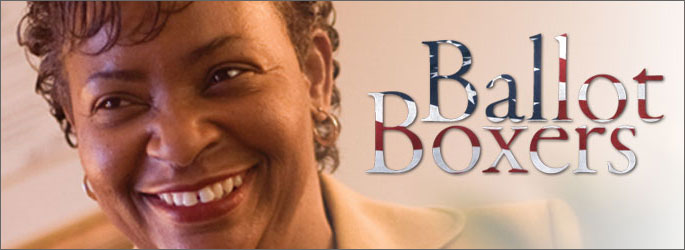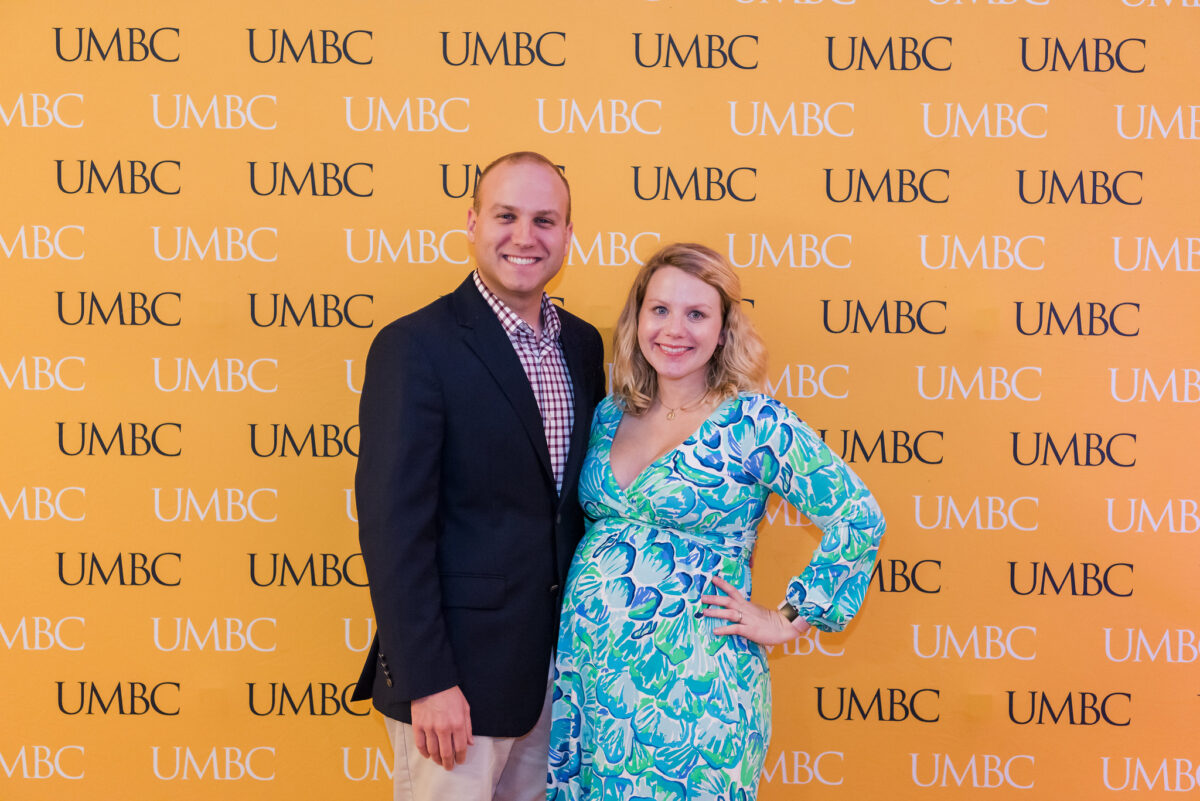Four UMBC alumnae who have made careers in politics and government look back at an electoral cycle that held landmarks and heartbreaks for women candidates.
The year 2008 saw a momentous breakthrough for African-Americans in U.S. electoral politics. But it was a landmark year for women as well.
UMBC Magazine talked with four prominent political alumnae just after Election Day 2008. We asked them to reflect not only on the tumultuous political year, but also about gender and politics issues in their own careers.
And to add some scholarly perspective, Cheryl M. Miller, an associate dean in UMBC’s College of Arts, Humanities and Social Sciences and a professor of political science, examines how 2008 advanced historical trends for women’s presence in government at all levels. (See “Herstory Lessons”)
Collecting a Caucus
As late as the 1980s, fewer than 25 percent of the members of Maryland’s House of Delegates were women.
Today, however, that number stands at 40 percent – and it is growing. Delegate Adrienne A. Jones ’76, psychology, is not only a part of that fast-increasing contingent of women; she is among its leaders.
In January 2008, Jones was elected for the sixth time to the position of Speaker Pro Tem of the House of Delegates. She is the first African-American woman to serve in that position. Jones also sits on the powerful House Appropriations Committee, which wields significant authority over Maryland’s state budget.
“It is important that women increase their numbers,” says Jones. “Women have a different perspective.”
In 1997, Jones was appointed to the House of Delegates by Governor Parris Glendening, when Delegate Joan Parker’s death created a vacancy in the 10th District. She won the seat in the 1998 election and has held it since.
Jones grew up in Baltimore County and attended its public schools before coming to UMBC. Shortly after graduation, she was hired to work in Baltimore County government. For more than three decades, Jones has served as executive director of the county’s Office of Fair Practices and Community Affairs. (She was named UMBC Alumna of the Year in 2003.)
She believes that her strong grounding in local government prepared her well for her ascent to state politics – and led her to apply for appointment to the state legislature in 1997.
“I thought that my background, in local government, lent itself well for transformation over to the state level in terms of issues and concerns,” says Jones. A reputation as a hard worker and a team builder in Annapolis has also had an impact on her success.
“I don’t have a big ego,” says Jones. “I’m a consensus builder. What’s more important to me is the end result, as opposed to the means. I believe in looking at the potential for other members.”
As she surveys the growing power of women in Annapolis, Jones puts her finger on one key factor. “A lot of it is attributable to House leadership under this speaker, Mike Busch,” she observes.
Jones says that navigating her way through male-dominated state politics as a woman, especially early in her career, was made easier because of her background.
“I am used to dealing with men,” she says. “I have four brothers and two sons, so I’m used to a male-dominated atmosphere. It doesn’t bother me one way or another. You’ve got to get it done? You get it done.”
Having more women legislators in Annapolis obviously means more power for the women’s caucus – and a greater focus on women’s issues. “The numbers help you in terms of counting the votes, which is all important in the House,” observes Jones.
While women legislators do not operate in lockstep on some issues, including abortion, Jones says that “they’re all members of the caucus. Their philosophies may be different. But a lot of times when it comes to key issues affecting women, such as pay parity, we are all together.”
Jones was a strong supporter of Sen. Hillary Clinton in the Democratic primary. “I knew her. I met her. And I knew her positions, particularly on health care,” she says. But she was a strong supporter of Sen. Barack Obama in the general election.
“For me as a Democrat,” says Jones, “what is important is our agenda.”
Sen. John McCain’s hope that the selection of Alaska Gov. Sarah Palin might sway disaffected Democratic women, says Jones, was incorrect. “Just because you’re a woman doesn’t necessarily mean anything,” she says.
“What’s important is your ideology.” Jones says Clinton’s campaign created new momentum for women leaders in politics. “What Hillary was able to do, as you heard often from her, was to get those 18 million votes that she had,” she says. “That had a tremendous impact as far as breaking that glass ceiling.”
She also hopes Clinton’s example attracts young women to careers in public service. “We want them to go into science and engineering, but also don’t forget about public service,” says Jones. “That’s what I think Hillary’s candidacy brought to the American people.”
Climbing Up (Capitol) Hill
Some women come to politics later in life, but Patricia Clark Adora Taylor ’84, political science, had her first brush with ballots in 1958, when she was 16 years old and attending a Florida high school.
“I was just rocking along in high school, having fun, being a cheerleader, when I was chosen from my high school for Girls’ State,” recalls Taylor. Girls’ State – and its associated program, Boys’ State – are youth leadership programs run by the American Legion. The experience swept Taylor into a lifelong interest in politics. She was elected “governor” of her Girls’ State class and participated (as the only female representative) in a conference at the White House.
Gov. Leroy Collins also tapped Taylor for a state Youth Advisory Council to advise him on a most contentious issue of that era in the South. “He was interested in integration in public schools,” she says. “He had to be. It was a burning issue of the times in the late ’50s, and Florida was slow to do it. ”
After high school, Taylor married Chester Taylor, an engineer who had a long career with the U.S. Army Corps of Engineers. She traveled all over the world, including substantial travel in the Middle East and Israel – experiences that she wrote about in her self-published memoir, Unveilings: A Desert Journey 1973 to 1983.
But Taylor never gave up her interest in politics and education. When she and her family moved to Maryland, UMBC accepted college credits earned at various military bases and she finished her political science degree in Catonsville after spending her junior year at Tel Aviv University.
Taylor says that Louis Cantori, a professor in UMBC’s political science department who passed away last year, was a big influence on her world view. In particular, he urged her to investigate both sides of the Israeli/Palestinian divide.
“He said to understand the conflict, you must meet Palestinians and talk with them and understand about them as well,” she recalls. “And that was a good suggestion.”
After graduation, Taylor embarked on two busy decades working for legislators on Capitol Hill and for Ross Perot at Electronic Data Systems, as well as earning a graduate degree from Duke University. When Taylor took her first job on Capitol Hill in the mid-1980s, there was still a considerable gap between men and women in legislative offices.
“I had a friend who’d been there in the Kennedy years, and she said that there were almost no women on the Hill. Secretaries here and there. But women in decision-making roles? There were just about none. Then you get to the ‘80s, and women are on the Hill. Some are in legislative staff roles, but not many. They’re still mostly in scheduling, office management, that sort of thing.”
Her first job was working for Florida Rep. Charles Bennett, who served for over four decades in the House. As an aide to Bennett, Taylor wrote legislation that created the Timucuan National Preserve near Jacksonville. In later jobs on the Hill with Pennsylvania Rep. Marjorie Margolies-Mezvinsky and Florida Rep. Corinne Brown, she worked on health care and international issues.
“When you work on the Hill,” she observes, “your product is your legislation or your policy, and you always have to be selling.”
When Taylor moved from Washington to Jacksonville earlier this decade, she did not lose her desire to stay involved in politics. During the primary, she was a strong supporter of Hillary Clinton’s campaign. And while Taylor was disappointed in Clinton’s primary loss, she backed Obama in the general election.
“It took me about a week to get on board,” says Taylor. “You had to get on board, because there was no alternative for people like me who are lifelong Democrats.”
Taylor wrote talking points and speeches for local Obama surrogates, including Florida state representative Tony Hill. “By the end, I was just on street corners,” she says. “Handing out literature, doing everything that you could.”
The Republican Party’s selection of Sarah Palin as their vice-presidential candidate did not sway Taylor. Palin is “lovely and talkative, but she’s against Roe v. Wade. It was the biggest slap in the face. I don’t care if she cooks well, or juggles schedules well, or if she learns her world geography. If she’s against Roe v. Wade, then that’s declaring that women do not have a lifestyle choice.”
While she still admits to feeling “crushed” by Clinton’s loss, Taylor says that the imperative for change likely spurred many women to support Obama. “As disappointed as they must have been,” she says, “they realized they did not want four more years of the Republicans.
“If I stop and think about it,” Taylor concludes, “I could get angry, because I think the media did not treat [Clinton] right.”
Leader of the PAC
Money is the lifeblood of American politics, and a rich vein for such fundraising is the political action committee, or PAC. Various industries and interest groups use PACs to exert influence on elections and navigate a complex net of campaign finance laws.
But PACs have also been maligned for giving those groups outsized influence on American elections. Barack Obama, for instance, made a ban on the acceptance of PAC money a building block of his successful presidential campaign.
As the manager of the political action committee at national accounting firm Deloitte LLP, Courtney Mattingly ’01, history, is a rising figure in the PAC landscape. Deloitte is one of the so-called Big Four accounting firms, and its committee disburses approximately $2 million in contributions per election cycle – raised exclusively from senior partners and managers in the firm.
Despite Obama’s much-publicized move to restrict PACs in his campaign, Mattingly says that political action committees are still the best way for businesses and other constituencies to make their voices heard, especially after campaign finance reform enacted earlier in this decade restricted unlimited contributions (known as “soft money”) from donors to national political parties.
“I think that after the soft money ban, the number of PACs is growing, and it’s growing faster than it was 10 years ago,” says Mattingly. Less than a year after leaving UMBC, Mattingly found work as the political compliance officer for the PAC run by the National Federation of Independent Business (NFIB) in Washington, D.C. The federation represents American small business owners, and the job stoked Mattingly’s interest in electoral politics.
“NFIB is really where I cut my teeth in the political stuff,” she says. “I was not terribly politically active before.”
Mattingly moved to a job with Deloitte’s PAC in 2005. She was promoted to manager of the committee in 2007. The job requires a nimble touch in calibrating the lobbying needs of the firm with astute analysis of the political landscape. Though the PAC had a tilt toward Republicans during the years of GOP ascendancy in Congress, Mattingly says that “we’ve tried to make our ratio of Republicans to Democrats more at parity than it had been in the past…. In 2006, it was more in the 70 to 30 range. This year we’re looking at 55 to 45 Republican to Democrat.”
In 2008, Mattingly sought to identify key legislators who are not directly involved with financial industries as potential candidates for the PAC. “I took a lot of interest over the summer tracking the key races,” she says. “How many seats the Republicans would be losing, and looking at some open seats. I was able to recommend a couple Democratic open seat candidates.”
Navigating public attitudes toward PACs is also tricky, but necessary. “We were a little taken aback,” says Mattingly, “when after Obama got the nomination, he told the Democratic party not to accept any PAC contributions. I can understand the tide of animosity against lobbyists after Jack Abramoff. I think people are interested in seeing the amount of power held by K Street be reduced. But I think they’re in for a battle if they try to limit PAC contributions. It’s definitely something that the business community and others will fight as far as the First Amendment goes.”
Mattingly points to EMILY’s List – a political action committee formed in 1985 to help elect more women candidates – as an example of how PACs can be a positive influence for change. “I don’t think PACs are going away anytime soon,” says Mattingly. “And I don’t think their importance is going to be diminished. We will have to perhaps explain what we do and why we do it.”
Mattingly believes that the 2008 election held promises yet to be fulfilled for women. “I think it’s still a glass ceiling that needs to be broken,” she says. “It’s trending in the right direction, but we still have a long way to go.”
The recipe, says Mattingly, is more bottom-up movement. “We need to see a base of women getting involved in state legislatures, then moving their way up the ranks. We need to encourage women to keep trying. It might be a Republican woman who does it first.”
On the Move
For Lisa Dickerson ’78, political science, all politics is local. Local transit, that is.
Dickerson has spent much of her career as an executive and a consultant in the business of moving people to their destinations, including three years as the chief executive officer of the Maryland Transit Authority from 2004 to 2007.
“Where you lay tracks, people build communities,” says Dickerson. And transit jobs offer chances for advancement, she adds, particularly for women.
“Anyone can have a career in transit,” she says. “It’s an excellent career choice for women.”
Transit, observes Dickerson, is built on easily quantifiable data: on-time bus and train arrivals, fares collected. She also points out that over half of today’s MTA drivers are African-American females.
“If you can measure it,” she says, “you can achieve it.”
Dickerson’s career has been a varied one, including a job as president of a transit firm serving Baltimore and Washington, D.C. airports and a stint as manager of field operations for the National Association for the Advancement of Colored People (NAACP). She started her professional career working for Maryland Republican Congressman Newton I. Steers in 1976, even before she graduated from UMBC.
Dickerson says that those varied experiences were part of the reason that Gov. Robert Ehrlich appointed her to the top post at the MTA in 2004.
“I came into the agency with a background in private industry,” she says. “I had run ground transportation at National Dulles and BWI airports. I had implemented MetroAccess service for [Washington Metropolitan Area Transit Authority]. I believe that the Ehrlich administration was looking for someone with transit experience, and they were looking to have diversity in their executive leadership.”
Since leaving the MTA in 2007, Dickerson has been busy doing consulting work for MTA and other agencies, with a special emphasis on community outreach.
Dickerson holds two other UMBC distinctions: She was named UMBC Alumna of the Year in 2006. And she was the last woman to serve out a full term as president of the Student Government Association (SGA) at the university. She remembers attending a reunion of SGA officers and realizing that no other woman had yet to follow her as elected president of the body in the three decades since she held the position in 1976.
Dickerson says she grew up in a household that nurtured high expectations. “I’m from an all-female family,” she says. “Five girls, no boys. So we grew up being told that we could do anything and be anything that we wanted to be, if you applied yourself – and your Christian values – and got a good education.”
In Dickerson’s view, 2008 broke a lot of new ground for women, as well as African-Americans, in electoral politics. “As far as women and minorities, what we grew up being told, all children, was that any little boy can be president,” she says. “Now we know that anybody can be president. That the American dream is possible. Not just in theory. Not just a dream. But that it is possible for someone who looks like me.”
Despite Hillary Clinton’s narrow loss, Dickerson views her candidacy as a milestone, in particular for the way that it allowed women to confound the simple dynamic of having to seem tough enough for the job. She cites a well-publicized incident during the New Hampshire primary campaign in which Clinton showed her vulnerable and human side after a tough defeat in Iowa’s primary. It was a pivotal moment, says Dickerson, especially since the former New York senator rebounded to win the state.
“I think people respond to the truth,” says Dickerson. “It was a moment when she said, ‘I am myself and I am qualified and I feel.’”
Dickerson says that she felt considerable sympathy for Sarah Palin, too. “There have been so many moments when I thought I’d be asked a question I didn’t know the answer to,” she says with a laugh. “So I could identify with that.”
Dickerson is also bullish on the chances of a female in Oval Office in the near future. Reflecting on her own upbringing in New Orleans, she points out that Barack Obama broke a barrier that many thought would never be shattered in their lifetime.
“I think it will be soon,” she says. “I grew up in the segregated South. So I didn’t know if [Obama would win] until election night. Dickerson spent election night with her two nieces, aged 15 and 13 years, and asked them if they thought a woman would ever be president. “They said, ‘Why not?’ The fact that it is a ludicrous question to the next generation means that it is going to be sooner rather than later.
“Women,” she concludes, “have to envision themselves there.”
Tags: Adrienne A. Jones, Courtney Mattingly, Education, Lisa Dickerson, Patricia Clark Adora Taylor, Political Science




